"Only exceptional individuals knew how to produce the Canaanite blades. This is clear evidence that already at the onset of the Bronze Age, the local society here was organized and complex, and had professional specialization."
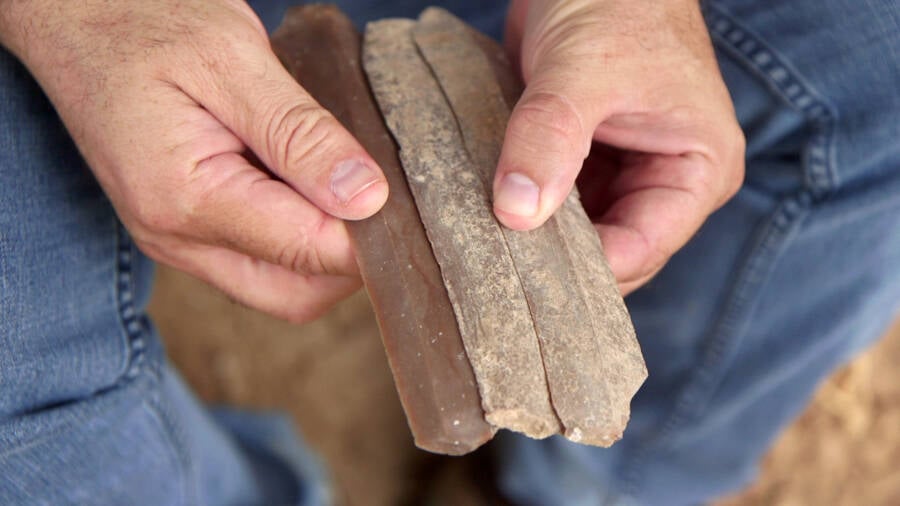
Israel Antiquities Authority The blades are “evidence of the technological sophistication” in the region during the Early Bronze Age.
About 5,500 years ago, people in Early Bronze Age Israel toiled to make flint Canaanite blades. Their methods were precise, sophisticated, and formulaic. And now, one of their ancient blade-making workshops has been uncovered near the city of Kiryat Gat.
The first such workshop found in southern Israel — evidence of the Canaanite blade industry has previously been found in the central and northern parts of the country — the blade workshop is a remarkable example of how ancient people worked together to produce tools.
Discovering The Bronze Age Blade Workshop In Kiryat Gat
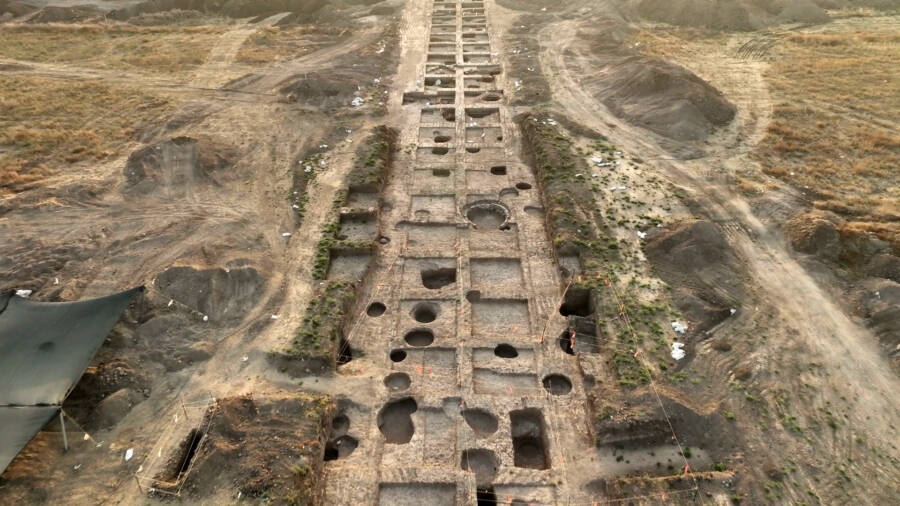
Israel Antiquities AuthorityThe archaeological site in Kiryat Gat where the ancient blade factory was excavated.
According to a Facebook post from the Israel Antiquities Authority (IAA), the ancient blade workshop was discovered ahead of the construction of a new neighborhood, Carmei Gat, in the Israeli city of Kiryat Gat.
As archaeologists excavated the site — which is estimated to be roughly 5,500 years old — they uncovered hundreds of flint blades and flint cores, which ancient people used to produce the blades. According to the IAA, the discovery of the cores is an especially rare occurrence and the ancient blade factory is the first of its kind to be uncovered in southern Israel.
Ancient people used the cores to produce “extremely sharp, uniformly shaped blades,” which were used “as knives for cutting and butchering” as well as “harvesting tools, like sickle blades.”
“An advanced industry was revealed at the site, requiring an extremely high level of expertise,” IAA experts Dr. Jacob Vardi and Dudu Biton remarked in the statement. “Only exceptional individuals knew how to produce the Canaanite blades. This is clear evidence that already at the onset of the Bronze Age, the local society here was organized and complex, and had professional specialization.”
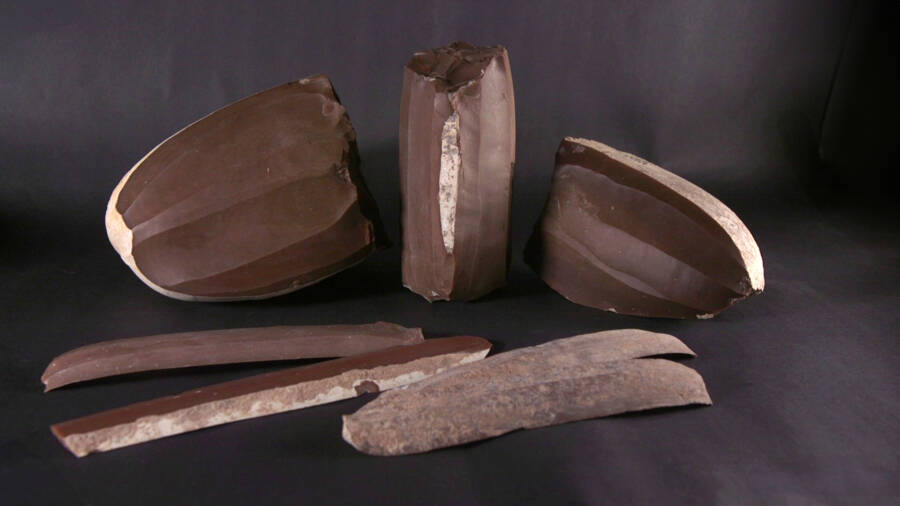
Israel Antiquities AuthorityArchaeologists found both flint blades and the cores that ancient people used to make the blades.
As the IAA explained in their statement, the discovery of the workshop is indicative of an Early Bronze Age society with “a complex social and economic structure.”
“This is an important find in that it deepens the understanding of both the beginnings of urbanization and of professional specialization in the Land of Israel,” IAA Excavation Directors Dr. Martin David Pasternak, Shira Lifshitz, and Dr. Nathan Ben-Ari, explained, “phenomena that led to the establishment of large settlements and that catalyzed the creation of new social structures.”
Perhaps most surprising, the researchers unearthed a huge cache of unused blades buried together. As expert Dudu Biton remarked, “It’s only speculation at this point, but we’re exploring the possibility that this was some kind of ritual offering. That could explain why so many unused blades were intentionally buried together.”
A Peek Inside The Ancient History Of Kiryat Gat
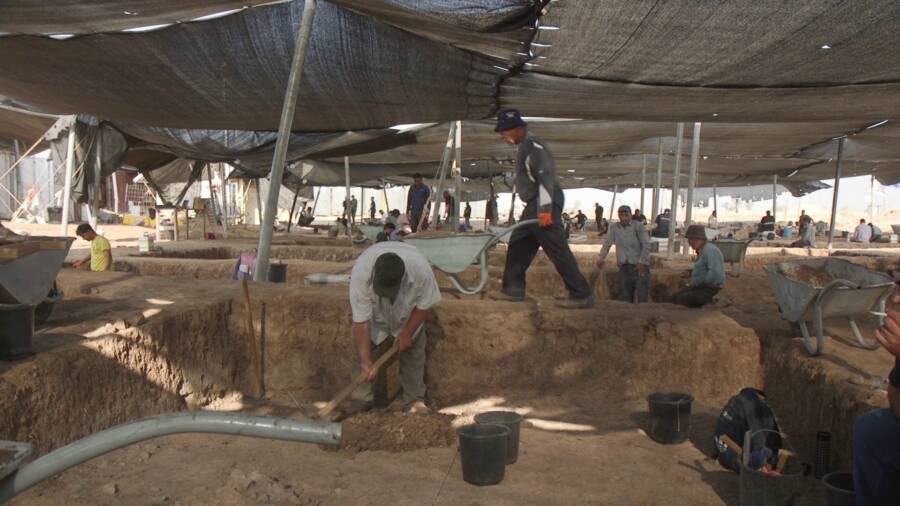
Israel Antiquities AuthorityThe archaeological site revealed that the ancient settlement that once existed in Carmei Gat was much larger than previously known.
The blade workshop is one small piece of the larger Early Bronze Age society that once existed in Kiryat Gat. According to IAA, the modern-day archaeological site where the blade workshop was found was an active settlement for centuries, from the Chalcolithic period through to the Early Bronze Age.
While excavating the area ahead of the construction of the new Carmei Gat neighborhood, archaeologists also discovered that the ancient settlement was much larger than they had previously estimated, stretching across more than half a square kilometer. Not only that, they found that it included hundreds of “underground pits,” some of which were fortified with mud bricks.
“These pits served a variety of purposes,” the excavation directors explained, “storage, dwellings, production crafts, and cultic/social rituals.”
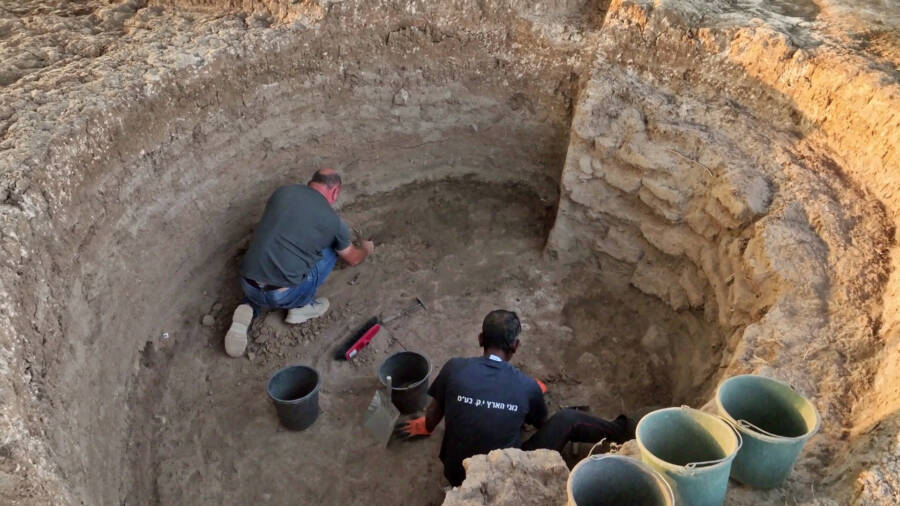
Israel Antiquities AuthorityArchaeologists also uncovered hundreds of pits, which once served a myriad of purposes.
Such discoveries are indications of a highly sophisticated society. And archaeologists believe that this Early Bronze Age society carefully guarded the secrets of their blade-making crafts.
“This is a sophisticated industry — not only because of the tools themselves, but also because of what is not found,” Dr. Jacob Vardi explained. “The waste fragments, the debitage, were not scattered outside the site — perhaps to better protect and preserve the professional knowledge within the group of experts. Today, we understand that this site served as a center, from which Canaanite blades were distributed across broad regions in the Levant.”
After reading about the ancient blade workshop that was uncovered in southern Israel, discover the story of Golgotha, the site outside of ancient Jerusalem where the Bible says Jesus Christ was crucified. Or, look through these fascinating photos of Old Jerusalem from the late 19th and early 20th centuries.





